目录
- 一、使用 SpringBoot 的步骤
- 二、自动配置原理
- 三、SpringBoot 对静态资源的映射规则
一、使用 SpringBoot 的步骤
【1】创建SpringBoot应用,选中自己需要的模块。
SpringBoot已经默认将这些场景配置好,只需要在配置文件中指定少量配置就可以运行起来。【3】编写业务逻辑代码。
二、自动配置原理
我们要了解SpringBoot帮我们配置了什么?能不能修改?能修改那些配置?能不能扩展等等。
xxxAutoConfiguration:帮我们给容器中自动配置组件。【2】xxxProperties:配置来封装配置文件的内容。
三、SpringBoot 对静态资源的映射规则
当创建一个jar工程时,想引入css等静态资源时,需要遵守SpringBoot的静态资源映射关系,通过WebMvcAutoConfiguration查看静态配置资源的规则。
//添加资源映射addResourceHandlers
public void addResourceHandlers(ResourceHandlerRegistry registry) {
if(!this.resourceProperties.isAddMappings()) {
logger.debug("Default resource handling disabled");
} else {
Integer cachePeriod = this.resourceProperties.getCachePeriod();
if(!registry.hasMappingForPattern("/webjars/**")) {
this.customizeResourceHandlerRegistration(registry.addResourceHandler(new String[]{"/webjars/**"}).addResourceLocations(new String[]{"classpath:/META-INF/resources/webjars/"}).sethttp://www.devze.comCachePeriod(cachePeriod));
}
// 3中说明
String staticPathPattern = this.mvcProperties.getStaticPathPattern();
if(!registry.hasMappingForPattern(staticPathPattern)) {
this.customizeResourceHandlerRegistration(registry.addResourceHandler(new String[]{staticPathPattern}).addResourceLocations(this.resourceProperties.getStaticLocations()).setCachePeriod(cachePeriod));
}
}
}
【1】如上配置的/webjars/**可知,所有的获取都去classpath:/META-INF/resources/webjars下找资源。而webjar实际上是以jar包的方式引入静态资源,可以参考官方文档

▶ 获取jquery的jar包依赖:
<dependency>
<groupId>org.webjars</groupId>
www.devze.com <artifactId>jquery</artifactId>
<version>3.3.1-1</version>
</dependency>
▶ 进入导入的Jquery的jar包中,查看目录结构如下:所有的 /webjars/**,都去classpath:/META‐INF/resourhttp://www.devze.comces/webjars/找资源。例如:localhost:8080/webjars/jquery/3.3.1/jquery.js(在访问的时候,只需要写webjars下面资源的名称即可)
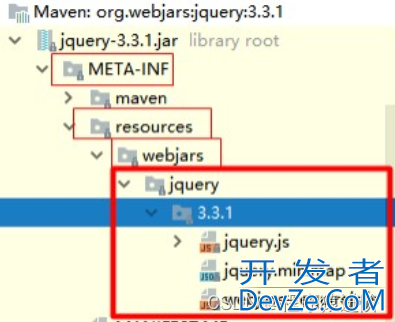
【2】同时可以在ResourceProperties设置与静态资源有关的参数,例如缓存时间。
@ConfigurationProperties(
prefix = "spring.resources",
ignoreUnknownFields = false
)
public class ResourceProperties implements ResourceLoaderAware, InitializingBean {
【3】除了/webjars/**,我们看下紧接着的第二个方法获取staticPathPattern路径:最终方法指向 =/**访问当前项目的任何资源(静态资源的文件夹)。
this.staticPathPattern = "/**";
如果没有进行处理,就会从如下路径中进行获取:
classpath:/META-INF/resources/", "classpath:/resources/", "classpath:/static/", "classpath:/public/" "/":当前项目根路径 ,以上就是静态资源的文件处理。
private static final String[] SERVLET_RESOURCE_LOCATIONS = new String[]{"/"};//当前项目根路径
private static final String[] CLASSPATH_RESOURCE_LOCATIONS = new String[]{"classpath:/META-INF/resources/",
"classpath:/resources/", "classpath:/static/", "classpath:/public/"};
private static final String[] RESOURCE_LOCATIONS;
static {
RESOURCE_LOCATIONS = new String[CLASSPATH_RESOURCE_LOCATIONS.length + SERVLET_RESOURCE_LOCATIONS.length];
System.arraycopy(SERVLET_RESOURCE_LOCATIONS, 0, RESOURCE_LOCATIONS, 0, SERVLET_RESOURCE_LOCATIONS.length);
System.arraycopy(CLASSPATH_RESOURCE_LOCATIONS, 0, RE编程客栈SOURCE_LOCATIONS, SERVLET_RESOURCE_LOCATIONS.length,
CLASSPATH_RESOURCE_LOCATIONS.length编程客栈);
}
【4】获取欢迎页,通过如下代码可知:静态资源文件夹下的所有index.html页面,都被“/**”映射。(localhost:8080——就能够访问首页)
// 获取欢迎页
@Bean
public WebMvcAutoConfiguration.WelcomePageHandlerMapping welcomePageHandlerMapping(ResourceProperties resourceProperties) {
return new WebMvcAutoConfiguration.WelcomePageHandlerMapping(resourceProperties.getWelcomePage(),
this.mvcProperties.getStaticPathPattern());
}
//进入如上的resourceProperties.getWelcomePage()方法,会获取到当前项目路径下的index.html文件。
private String[] getStaticWelcomePageLocations() {
String[] result = new String[this.staticLocations.length];
for(int i = 0; i < result.length; ++i) {
String location = this.staticLocations[i];
if(!location.endsWith("/")) {
location = location + "/";
}
result[i] = location + "index.html";
}
return result;
}
//进入如上的this.mvcProperties.getStaticPathPattern()方法,获取映射的路径
this.staticPathPattern = "/**";
【5】所有的**/favicon.ico都是从静态文件中获取一个favicon.ico文件。图标:

@Configuration
@ConditionalOnProperty(
value = {"spring.mvc.favicon.enabled"},
matchIfMissing = true
)
public static class FaviconConfiguration {
private final ResourceProperties resourceProperties;
public FaviconConfiguration(ResourceProperties resourceProperties) {
this.resourceProperties = resourceProperties;
}
@Bean
public SimpleUrlHandlerMapping faviconHandlerMapping() {
SimpleUrlHandlerMapping mapping = new SimpleUrlHandlerMapping();
mapping.setOrder(-2147483647);
//默认获取图标的位置和名称
mapping.setUrlMap(Collections.singletonMap("**/favicon.ico", this.faviconRequestHandler()));
return mapping;
}
}
【6】也可以在application.properties全局配置文件中自定义静态文件:在配置文件中设置如下,那么默认的就不在生效。
# 配置文件是一个数组,可以用逗号进行分隔 spring.resources.static-locations=classpath:/hello/,calsspath:/xxx/
到此这篇关于SpringBoot——静态资源及原理的文章就介绍到这了,更多相关SpringBoot静态资源内容请搜索编程客栈(www.devze.com)以前的文章或继续浏览下面的相关文章希望大家以后多多支持编程客栈(www.devze.com)!
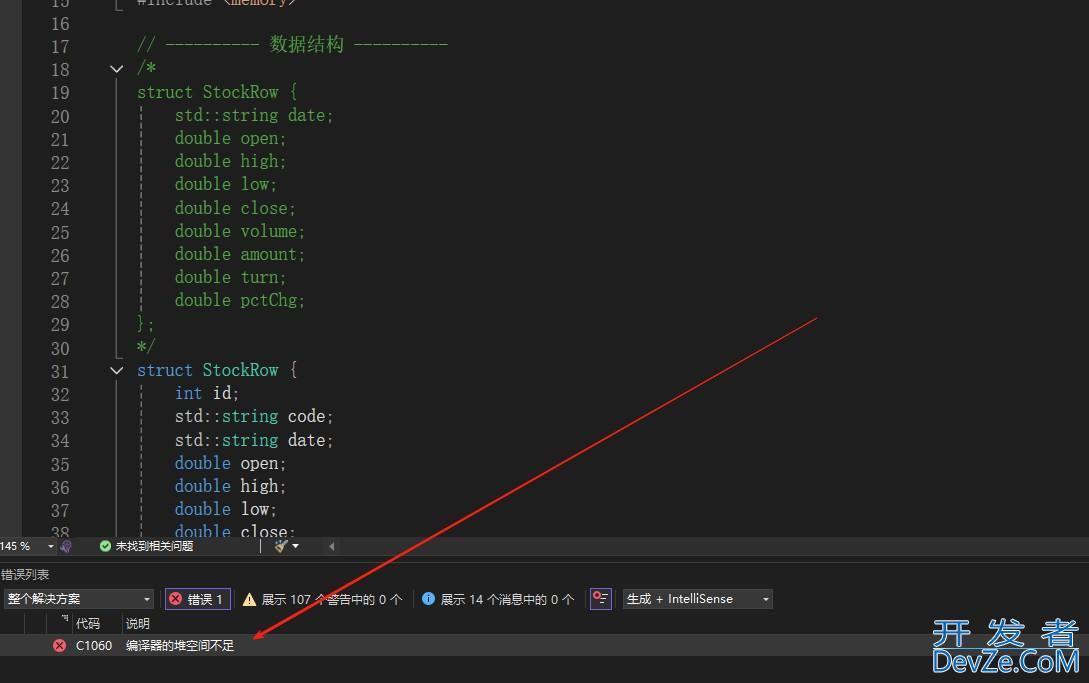

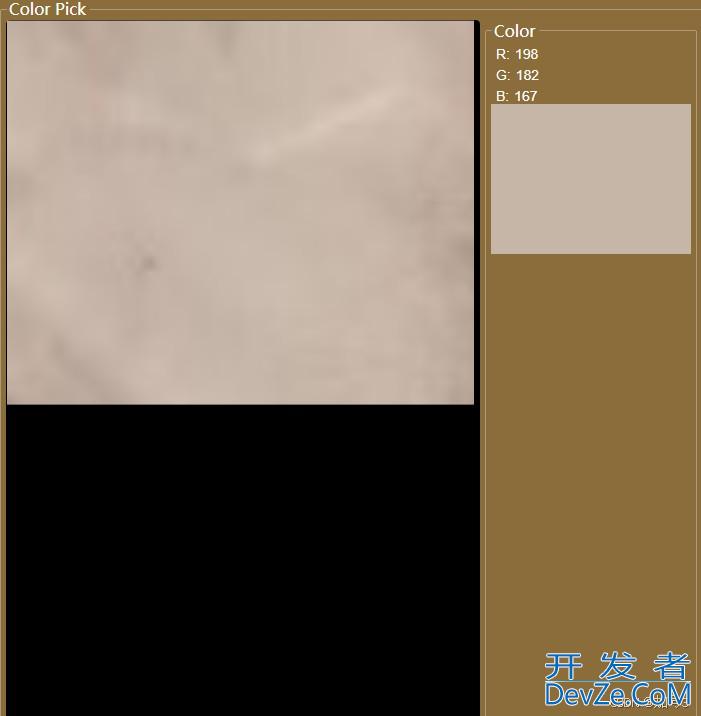
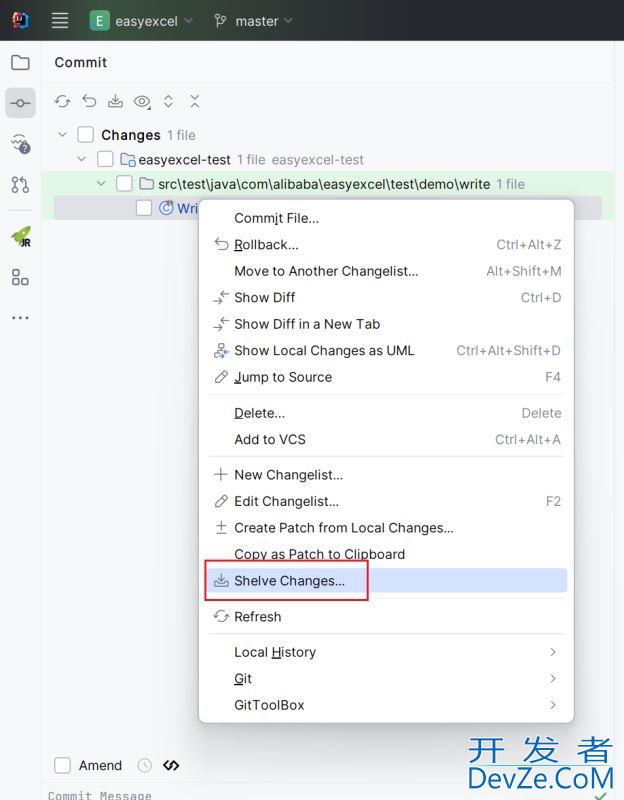

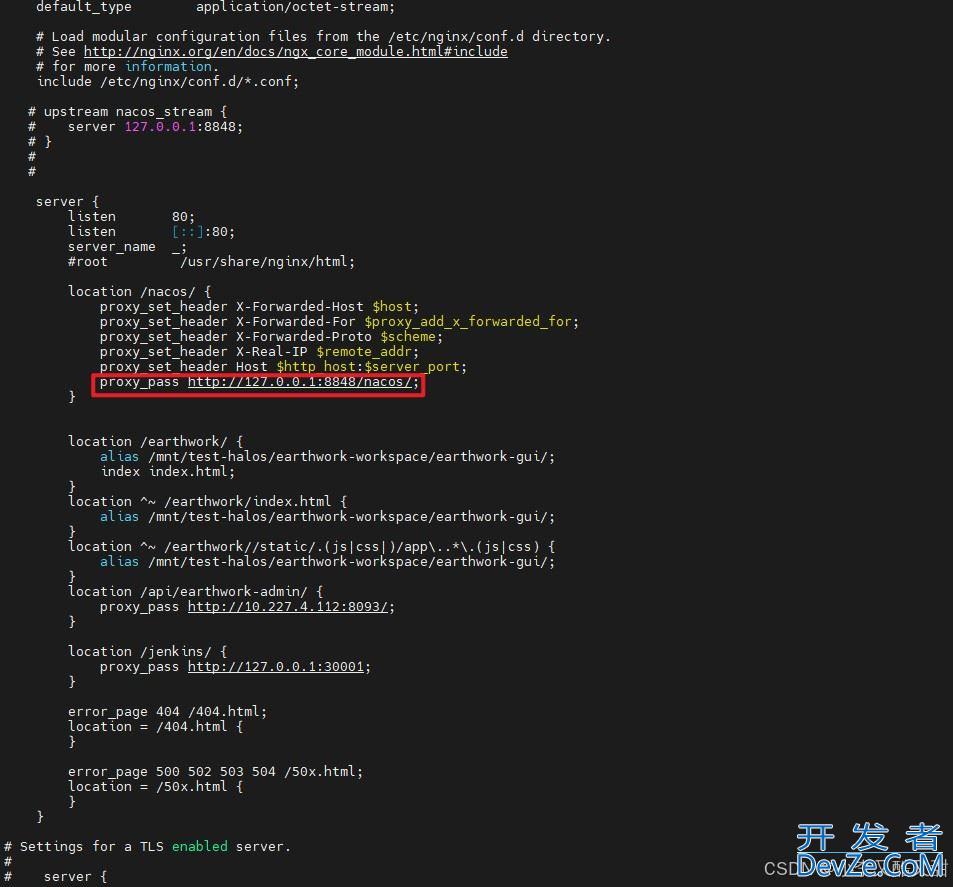
 加载中,请稍侯......
加载中,请稍侯......
精彩评论